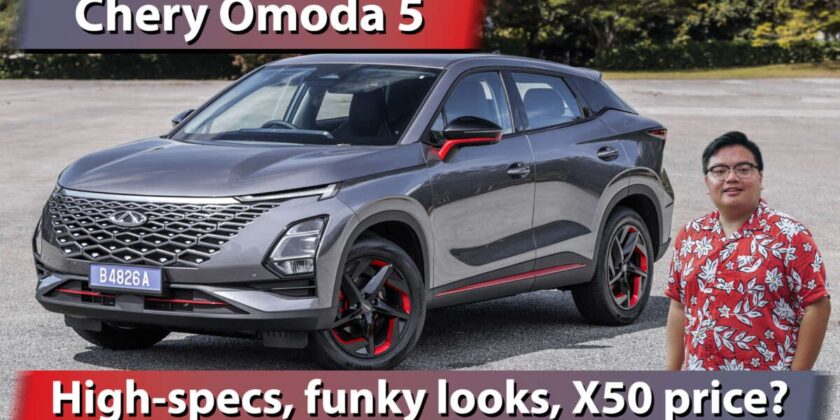The Malaysian car market, especially the already crowded SUV space, is about to get hotter real soon. Chinese carmakers have our market in their sights and are preparing to take the fight to B-segment bulk sellers Honda HR-V, Toyota Corolla Cross and the Proton X50.
In many ways, the latter – which let’s not forget, is their peer, just with a Malaysian badge – showed that Malaysians can accept Chinese cars with modern design and specs, at lower than Japanese prices. Great Wall Motor will be bringing its Haval SUVs in, as previewed at last week’s Malaysia Autoshow, but Chery is much further ahead of the curve.
The Omoda 5 and Tiggo 8 Pro will be launching in June/July and both SUVs will debut in CKD form – yup, no initial small CBU batch to ‘test the waters’ but local assembly (at Inokom in Kulim, Kedah) right from the start, with full EVs and plug-in hybrids lined up for the second wave. Another bold move is Chery doing Malaysia – a very difficult market to penetrate – alone and without a local partner. Even the mighty BYD has Sime Darby.
Not sure which is bolder, Chery going it alone in Malaysia or the Omoda 5’s studded nose, which is something you’ll either love or hate. The rest of the SUV’s body should be less divisive. It’s a sculpted shape with blacked out rear pillars and a full-width strip for the tail, with Chery spelled out in letters. Very current. Face aside, I see a bit of Lexus in the Omoda 5, which is no bad thing. What do you think?
The Omoda 5’s dashboard is similarly on-trend, sporting co-joined screens pioneered by Mercedes-Benz and a high centre console. Although it’s nicely minimalist, you don’t have to dive into the touchscreen for vital controls such as AC functions, which are stealthily embedded in the trim.
Chery is perhaps the most international-minded Chinese OEM, and the Omoda 5 gets Apple CarPlay and Android Auto. Wireless too, and your phone rests on an angle for easy viewing. Speaking of phones, there’s also wireless charging. Also on are a sunroof (not very big though, and it’s manual) and an eight-speaker Sony sound system. And how about double-glazed windows to boost NVH?
There’s more, so join the full tour in the video, where Hafriz Shah also praises Chery’s right-hand drive conversion, which is better than Geely-Proton’s efforts.
Pop the hood (struts) and you’ll find a 1.5 litre turbocharged four-cylinder engine with 154 hp (115 kW) and 230 Nm of torque, hence the 230T badge. Drive goes to the front wheels via a CVT with nine virtual ratios. We can confirm that the engine will get Chery’s 10-year/1,000,000-km warranty, which should put to bed reliability concerns.
Where does Chery’s in-house 1.5T stand on paper? The HR-V’s 1.5L VTEC Turbo four-pot makes 181 PS (178 hp) and 240 Nm, while the X50’s 1.5L turbocharged three-cylinder generates 177 PS (174 hp) and 255 Nm in TGDi form (Flagship variant) or 150 PS (148 hp) and 226 Nm in PFI guise. The HR-V uses a CVT while the X50 goes the DCT route. Our man runs an X50 Flagship, so what does he think of the Omoda’s powertrain? Watch the video.
Buyers will get a lot of specs and design for the money, but at what money? This fully-loaded top-spec version will be priced between the X50 Flagship (RM113,300) and HR-V Turbo V (RM134,800), and we’re anticipating the RRP to be closer to the Proton than the Honda. Do we see some raised eyebrows? The official launch is just around the corner now, so stay tuned.
Source: Read Full Article


